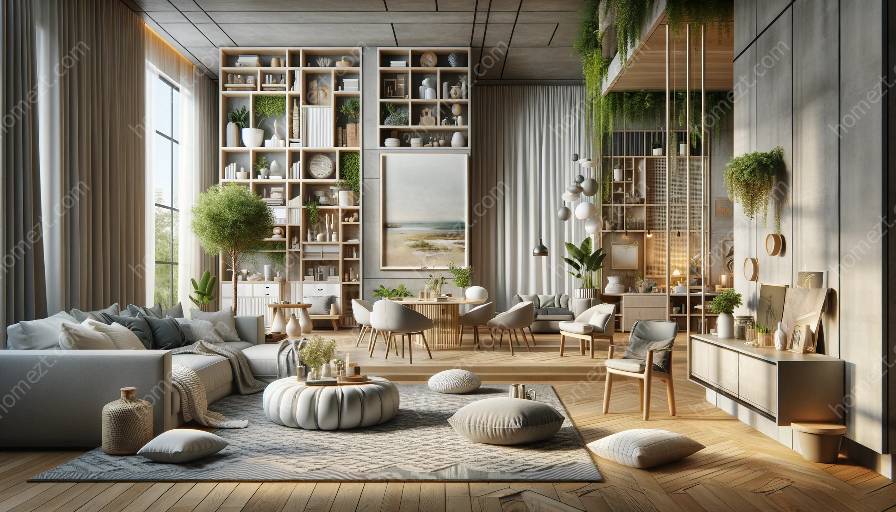Color theory plays a significant role in space optimization, especially in the realm of interior design and space planning. Understanding the principles of color and its psychological effects is essential for creating attractive and functional spaces. In this comprehensive guide, we will explore the intricate relationship between color theory and space optimization, delving into how color can be leveraged to enhance the look and feel of interior spaces while improving their functionality.
The Importance of Color in Space Planning and Optimization
Color is a powerful tool in interior design and space planning, as it has the ability to influence the perceived size, mood, and functionality of a space. When strategically applied, color can transform a room, making it appear larger, cozier, or more organized. By harnessing the principles of color theory, designers and space planners can optimize spaces to align with specific objectives, whether it's creating a calming environment for relaxation or stimulating creativity and productivity.
Psychological Effects of Colors
Before delving into the practical applications of color theory in space optimization, it's important to understand the psychological effects of different colors:
- Red: Associated with energy, passion, and warmth. It can be used to create a sense of excitement and stimulate conversation in social spaces.
- Blue: Evokes feelings of calmness, trust, and stability. Ideal for creating tranquil and serene environments.
- Yellow: Represents happiness, optimism, and creativity. It can add a lively and energetic atmosphere to a space.
- Green: Symbolizes nature, balance, and harmony. Perfect for creating a sense of peace and relaxation.
- Purple: Linked to luxury, mystery, and spirituality. Often used to create a sense of opulence and creativity.
- Orange: Connotes vitality, enthusiasm, and warmth. It can add a vibrant and energetic touch to a space.
- Neutral Colors: Such as white, gray, and beige, provide versatility and can serve as a backdrop to other colors, offering a sense of simplicity and sophistication.
Color Schemes for Space Optimization
When applying color theory to space optimization, designers often utilize various color schemes to achieve specific effects:
- Monochromatic: Involves using different shades and tints of a single color, creating a harmonious and soothing atmosphere.
- Analogous: Incorporates colors that are adjacent to each other on the color wheel, generating a cohesive and serene ambiance.
- Complementary: Combines colors that are opposite each other on the color wheel, producing a dynamic and visually stimulating environment.
- Triadic: Involves using three colors evenly spaced around the color wheel, resulting in a balanced and vibrant space.
- Split-Complementary: Utilizes a base color and the two colors adjacent to its complementary color, offering a balanced yet dynamic look.
- Tetradic (Double Complementary): Combines two sets of complementary colors, providing a diverse and lively palette for a space.
Using Color to Optimize Space
Now that we've explored the psychological effects and color schemes, let's delve into practical applications of color theory in space optimization:
Creating Illusions of Space
Lighter colors, especially cool tones like pale blues and soft greens, can make a room appear more spacious, while darker shades can add coziness and intimacy. By strategically applying colors, designers can manipulate the perceived size of a space to meet specific spatial objectives.
Defining Functionality and Mood
Color can be used to define different areas within a space, such as using warmer hues to create a cozy seating area within a larger room, or cooler tones to establish a serene workspace. The selection of colors can also influence the mood and atmosphere of a space, whether it's promoting relaxation in a bedroom or fostering creativity in a home office.
Enhancing Visual Flow and Harmony
By employing a well-thought-out color scheme, designers can guide the visual flow within a space, creating a sense of cohesion and harmony. The strategic placement of colors can lead the eye through a space and emphasize its architectural features, enhancing the overall aesthetic appeal.
Color Psychology and Branding
In commercial spaces, understanding color psychology is crucial for reinforcing branding and creating experiences that resonate with customers. The colors used in retail, hospitality, and office environments can significantly impact the perception of a brand's identity and influence consumer behavior.
Conclusion
Color theory is a powerful tool in space optimization, offering endless possibilities for creating aesthetically pleasing and functional interiors. By leveraging the psychological effects and strategic application of color, designers and space planners can transform spaces to align with specific needs and objectives. Whether it's a residential, commercial, or public environment, the careful consideration of color can significantly impact the way we perceive and experience a space, making it an indispensable element of interior design and space planning.


























